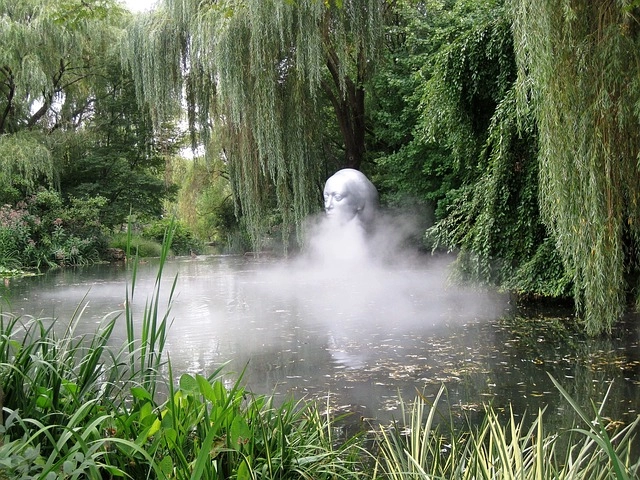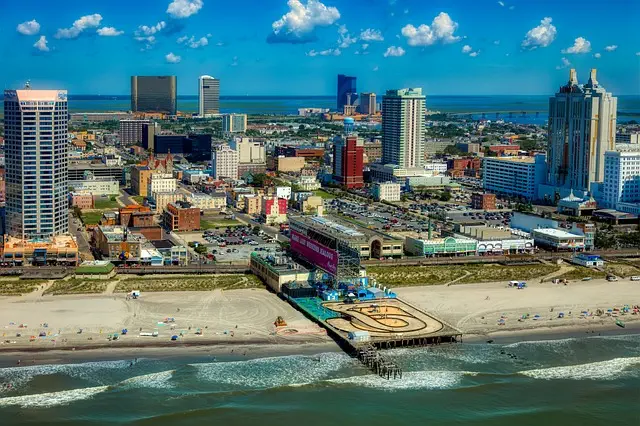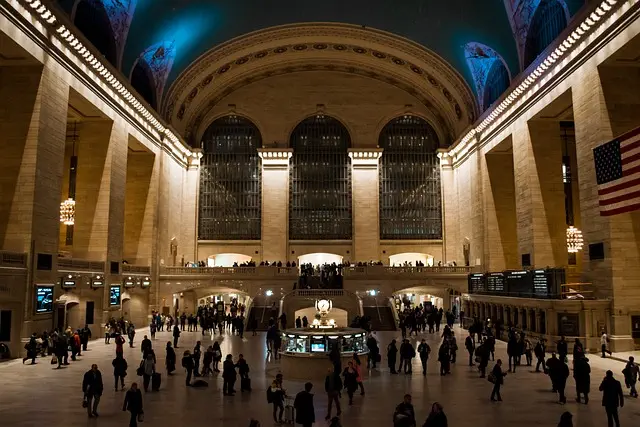The Albany Street Bridge in Middlesex County, New Jersey, is an iconic piece of infrastructure completed in 1890 that has stood the test of time as both a significant engineering achievement and a historical landmark. It serves as a vital connection between New Brunswick and Middlesex County, facilitating transportation for vehicles and pedestrians over the Raritan River. The bridge's architectural integrity and structural soundness have been preserved through careful restoration efforts, ensuring it continues to function as a key route between urban centers and rural landscapes of New Jersey. Its design is a blend of late 19th-century innovation and modern functionality, catering to contemporary transit needs. Beyond its utilitarian role, the bridge is a cultural asset that attracts historians and visitors, reflecting Middlesex County's contribution to American bridge construction and its commitment to both preserving history and advancing towards a sustainable future as evidenced by the 2019 rehabilitation project. The Albany Street Bridge remains a testament to Middlesex County's dedication to progress, community vitality, and environmental stewardship.
The Albany Street Bridge stands as a testament to the rich history and engineering prowess of Middlesex County, New Jersey. This article explores the bridge’s pivotal role in connecting New Brunswick with Middlesex County, offering insights into its architectural significance, social impact, and evolution over time. As a historical icon, the Albany Street Bridge has weathered changes while remaining integral to the region’s transportation infrastructure and community life. Join us as we delve into the stories behind its design innovations, its centrality in Middlesex County’s daily activities, and how it has adapted to meet modern sustainability standards.
- Albany Street Bridge: A Historical Icon Connecting New Brunswick and Middlesex County, NJ
- The Engineering Marvel: Albany Street Bridge's Architectural Significance and Design Innovations
- Community Nexus: The Social Role of Albany Street Bridge in Middlesex County's Everyday Life
- Sustainable Evolution: Albany Street Bridge's Journey from Past to Present in Middlesex County, New Jersey
Albany Street Bridge: A Historical Icon Connecting New Brunswick and Middlesex County, NJ

The Albany Street Bridge stands as a testament to engineering innovation and historical significance, spanning the Raritan River and linking New Brunswick with Middlesex County, NJ. This iconic structure has been a critical transportation route since its completion in 1890, offering vehicular and pedestrian passage across the waterway that separates these two regions of New Jersey. Over the years, the bridge has undergone various restoration projects to preserve its architectural integrity and structural soundness, ensuring it continues to serve as a vital connection point between bustling urban centers and the rich rural landscapes of Middlesex County. The bridge’s design, reflective of the late 19th-century engineering prowess, showcases its historical value while also accommodating modern transportation needs. It is a landmark that not only facilitates daily commutes for residents of Middlesex County New Jersey but also attracts tourists and history enthusiasts who appreciate its role in the area’s growth and development. The Albany Street Bridge remains an integral part of the local heritage, symbolizing the enduring spirit of collaboration and progress between New Brunswick and Middlesex County.
The Engineering Marvel: Albany Street Bridge's Architectural Significance and Design Innovations

The Albany Street Bridge, a pivotal landmark in New Brunswick, Middlesex County, New Jersey, stands as a testament to human ingenuity and architectural prowess. This engineering marvel spans the Raritan River, connecting the bustling city with its historical neighbors. Its design, a blend of form and function, has earned it a place of significance in the history of American bridges. The bridge’s innovative construction techniques incorporated advanced materials and methods, setting new standards for durability and safety at the time of its completion. Its arched structure, reminiscent of earlier architectural feats like the Eiffel Tower, not only adds to the aesthetic appeal but also allows for an unobstructed flow of river traffic below. The Albany Street Bridge is not just a route for vehicles and pedestrians; it’s a symbol of progress and a visual representation of Middlesex County’s role in the advancement of engineering and architecture within New Jersey and beyond. Its enduring presence over the Raritan River continues to captivate engineers, architects, and historians alike, offering insights into the evolution of bridge design and its impact on modern infrastructure.
Community Nexus: The Social Role of Albany Street Bridge in Middlesex County's Everyday Life

The Albany Street Bridge in New Brunswick, a key component of Middlesex County’s infrastructure, serves as a vital nexus for the local community. This architectural landmark is not merely a passageway over the Raritan River but a pivotal social hub that fosters daily interactions and shared experiences among residents and visitors alike. The bridge’s strategic location at the heart of New Brunswick facilitates commuting, pedestrian traffic, and local economic activities. It connects diverse neighborhoods, universities, and businesses, promoting cultural exchange and community cohesion. Middlesex County, New Jersey, relies on this bridge as a lifeline, with its daily operation underpinning the county’s social fabric and regional identity. The bridge’s role in supporting local events, from farmers’ markets to annual festivities, highlights its significance beyond mere transportation needs. It is a testament to the resilience of community connections and the importance of shared spaces in everyday life within Middlesex County.
Sustainable Evolution: Albany Street Bridge's Journey from Past to Present in Middlesex County, New Jersey

The Albany Street Bridge stands as a testament to Middlesex County, New Jersey’s commitment to evolution and sustainability. Originally constructed in 1890, this iconic structure has undergone significant transformations over time, reflecting the area’s growth and changing transportation needs. As part of its sustainable evolution, the bridge recently received a comprehensive rehabilitation that not only preserved its historical character but also enhanced its functionality and safety for commuters in New Jersey’s bustling Raritan Bayshore region. The Middlesex County community has consistently prioritized the bridge’s upkeep, ensuring it adapts to modern demands while maintaining its significance as a vital link between communities.
The latest project, completed in 2019, involved extensive renovations that included the replacement of its timber deck with a durable, environmentally friendly concrete surface, as well as the installation of LED lighting, which significantly reduces energy consumption and environmental impact. This initiative underscores Middlesex County’s dedication to sustainable infrastructure and responsible stewardship of its historic landmarks. The bridge now stands as a prime example of how heritage and innovation can coexist, offering residents and visitors alike a reliable passage that honors the past while embracing eco-friendly advancements.






